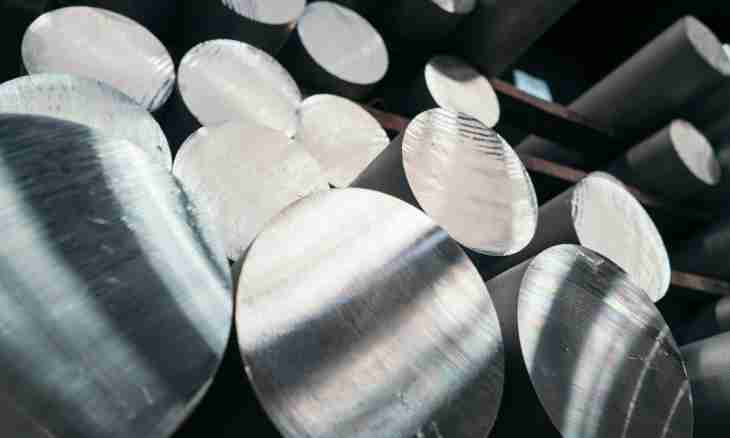Aluminum is chemical element III of group of periodic Mendeleev's system, in the nature one its stable isotope meets. On prevalence aluminum takes the fourth place among all chemical elements and the first — among metals.
Instruction
1. Aluminum represents light metal of silver-white color with a cubic face-centered crystal lattice, in a free look it does not meet. Its major mineral bauxite represents mix of hydroxides of aluminum: bemit, gibbsite and diaspora. Several hundreds of minerals of aluminum are found, the most part from them belongs to aminosilicates.
2. Aluminum has a valuable complex of properties: has small density, high electro- and heat conductivity. This metal easily gives in to stamping and forging, well cooks contact, gas and other types of welding. Its reflective ability is close to silver (about 90% of the falling light energy), at the same time aluminum is well polished and anodized.
3. Unlike the majority of other metals, strength properties of aluminum increase when cooling lower than 120 To, and plastic do not change. On air it becomes covered by a strong thin pore-free film which protects metal from further oxidation. This film causes its high corrosive stability.
4. Aluminum does not react with the concentrated or strongly diluted nitric acid, does not interact with fresh and sea water and also with foodstuff. However technical aluminum is subject to effect of the diluted hydrochloric acid and alkali. At reaction with alkalis it forms aluminates.
5. In the industry aluminum turns out by means of electrolysis of alumina in the melted cryolite which is carried out at a temperature of 950 °C. The electrolytic bathtub executed in the form of an iron casing with the electro- and heat-insulating material inside is for this purpose used. As the cathode serves the podina of a bathtub, and the anode — the coal blocks or the stuffed self-burning electrodes shipped in electrolyte. On the podena aluminum, and on the anode — oxygen and carbon dioxide collects.
6. Aluminum is widely applied practically in all areas of the equipment. Most often it is used in the form of alloys with other metals. It successfully replaces copper in electrical equipment by production of massive conductors. The electrolytic conductivity of aluminum is 65.5% of conductivity of copper. However it is three times lighter than copper therefore the mass of wires from aluminum are twice less than the mass of copper.
7. For production of electric rectifiers and condensers superpure aluminum is used, their action is based on ability of an oxidic film of this metal to pass electric current only in one direction.

